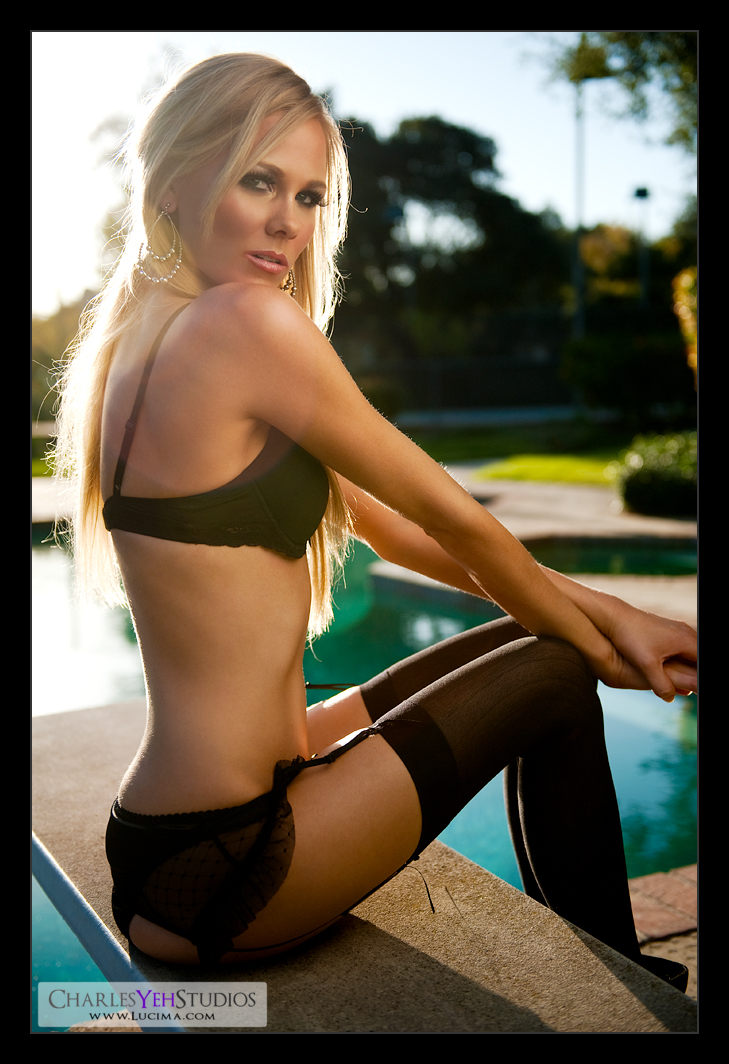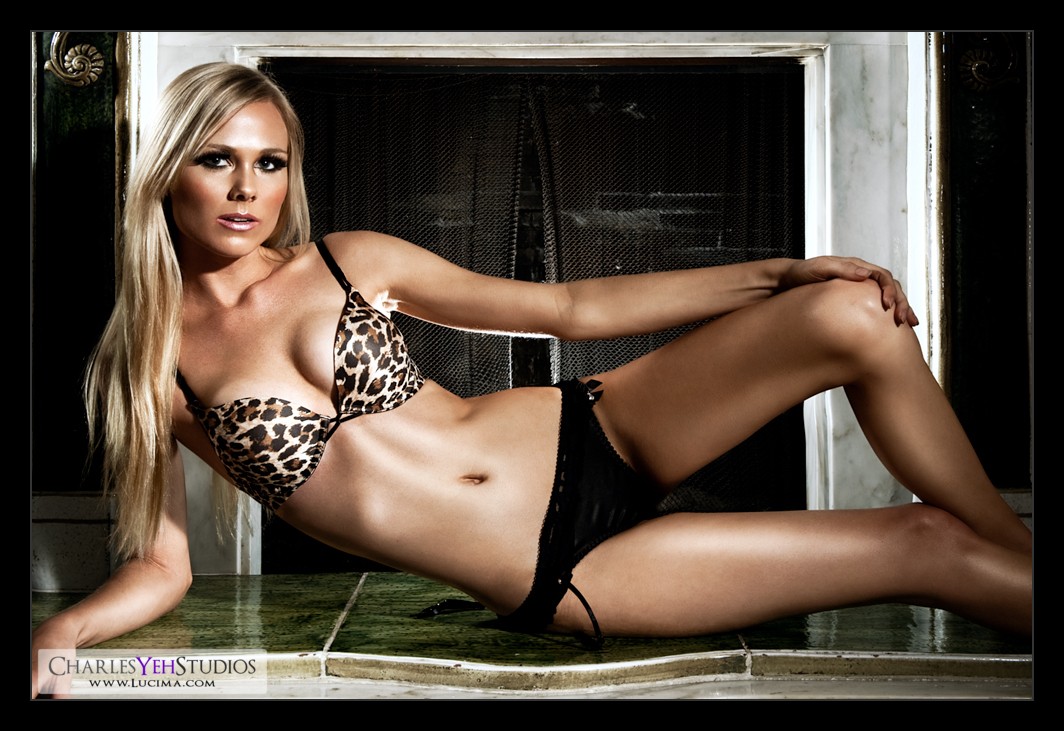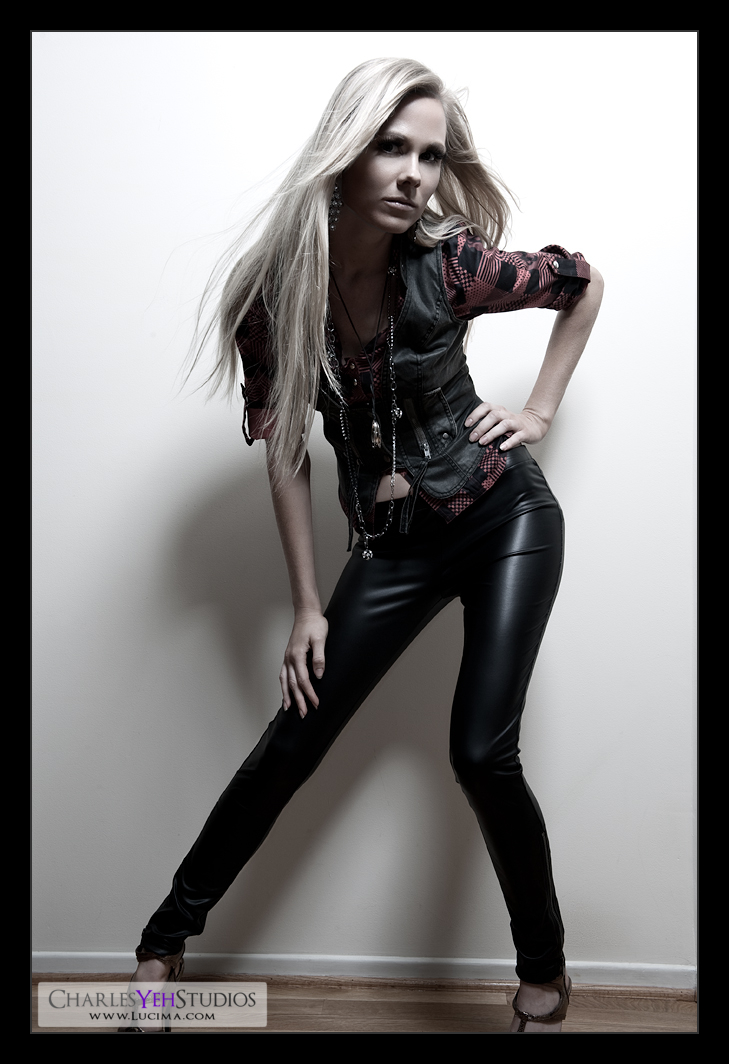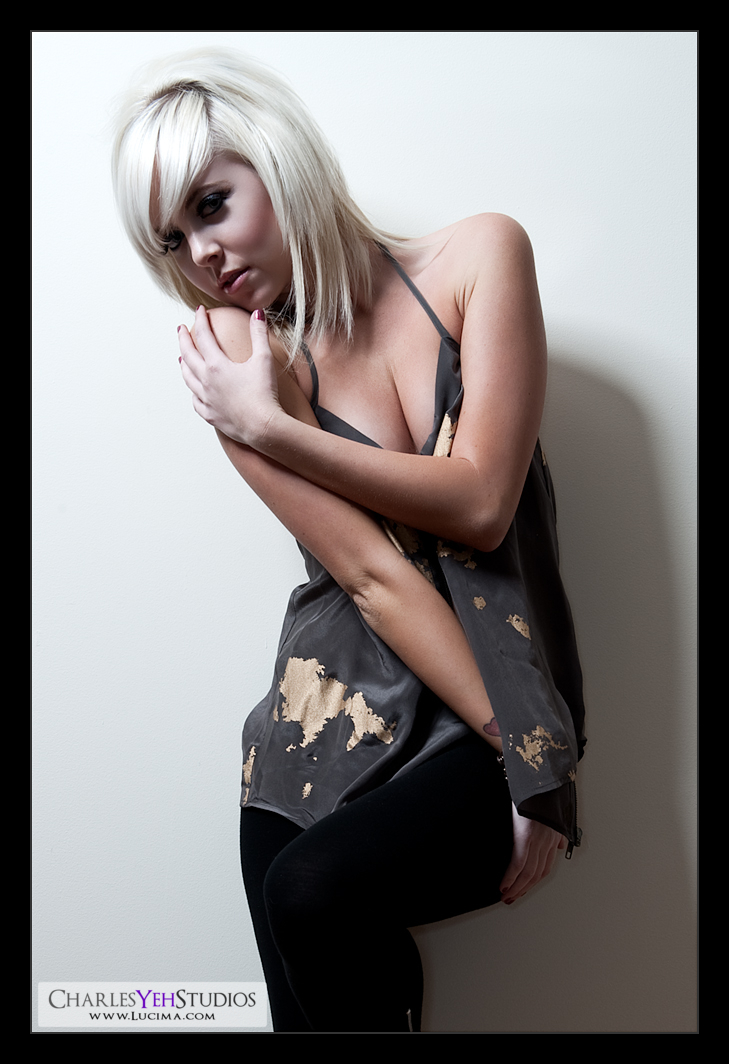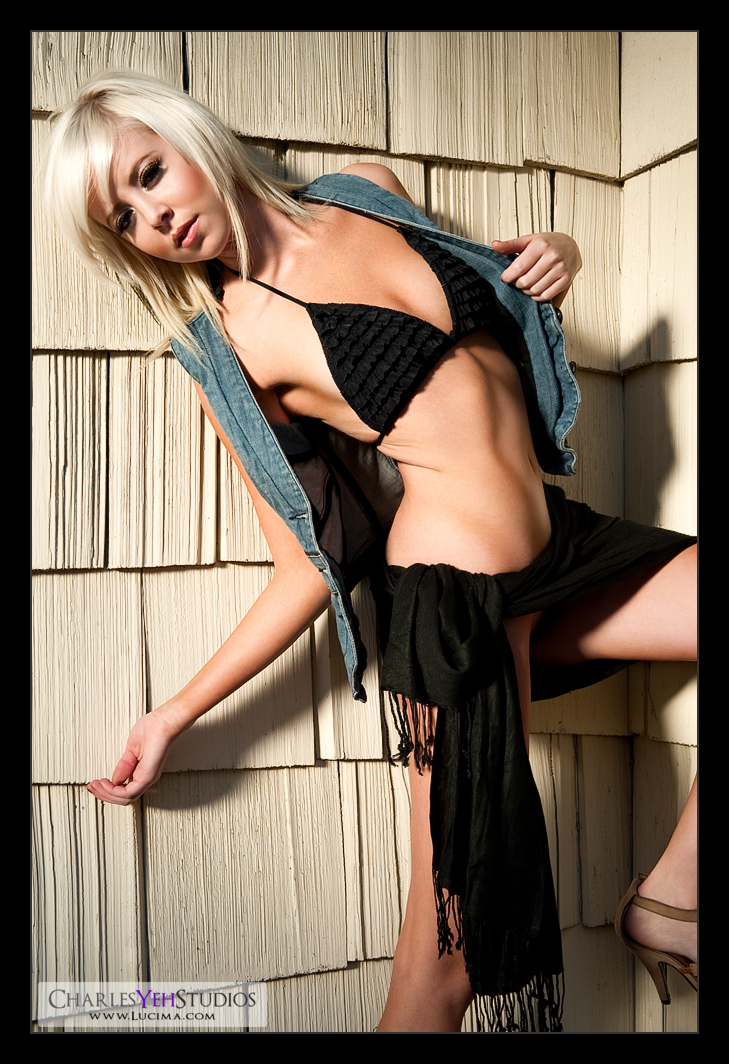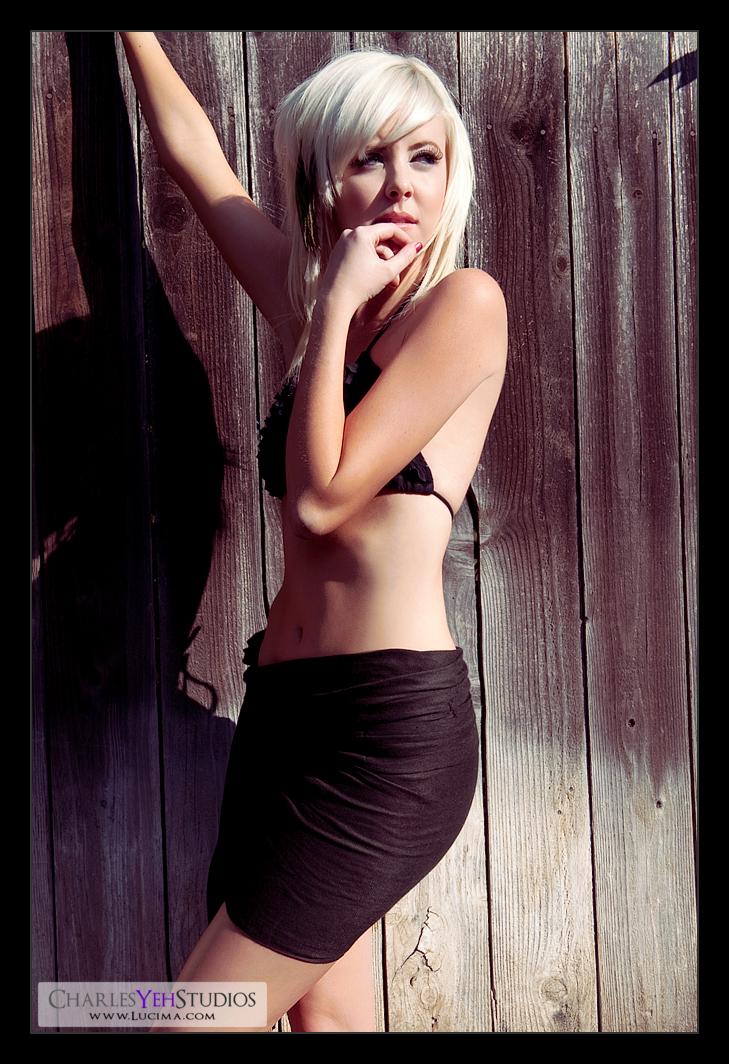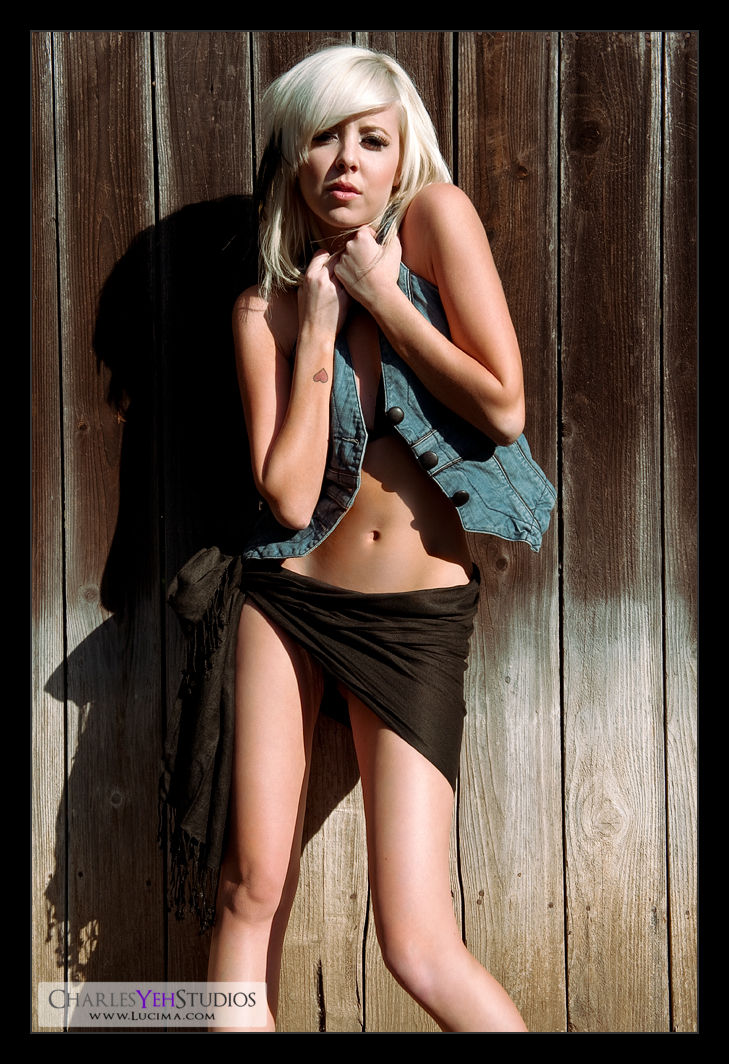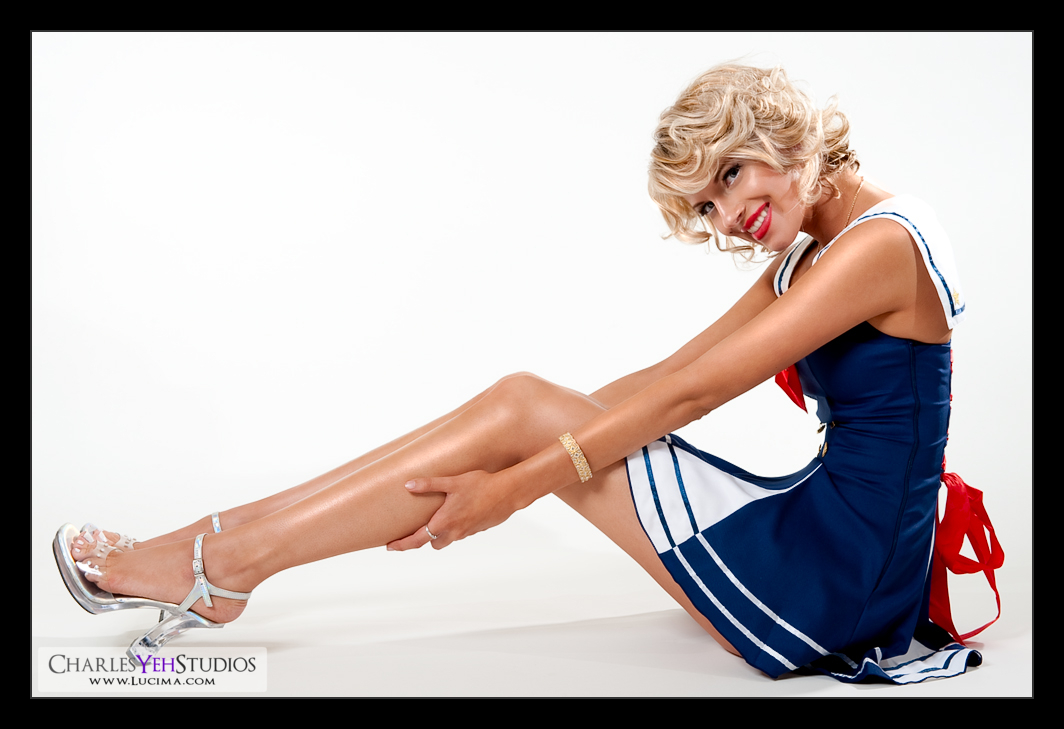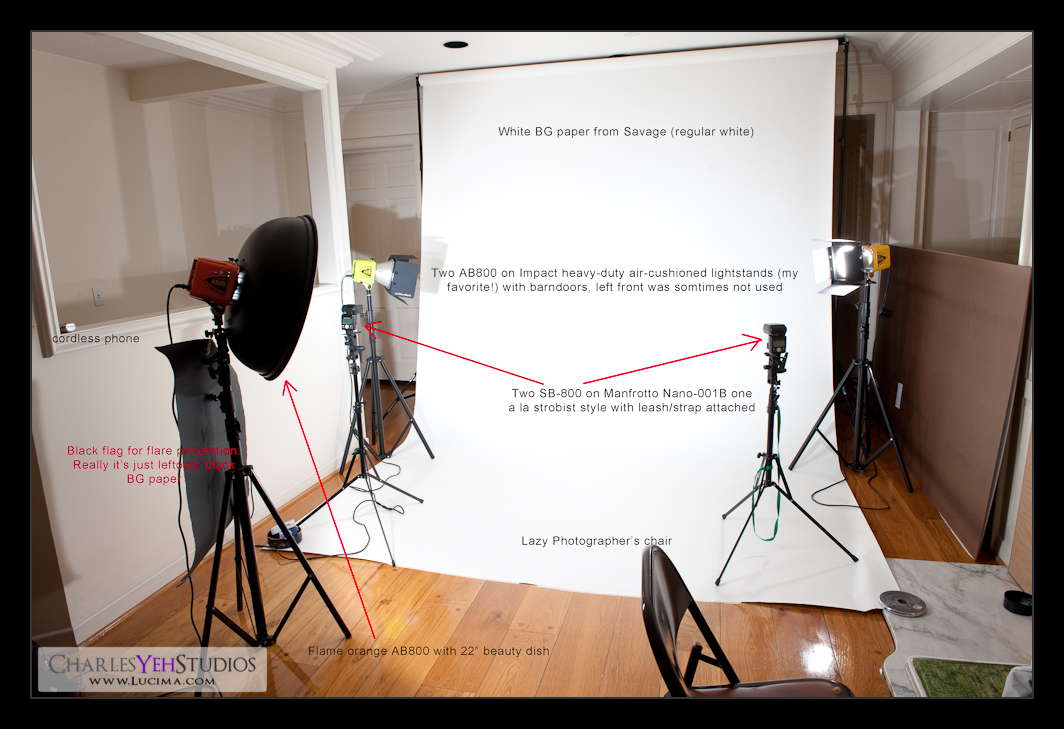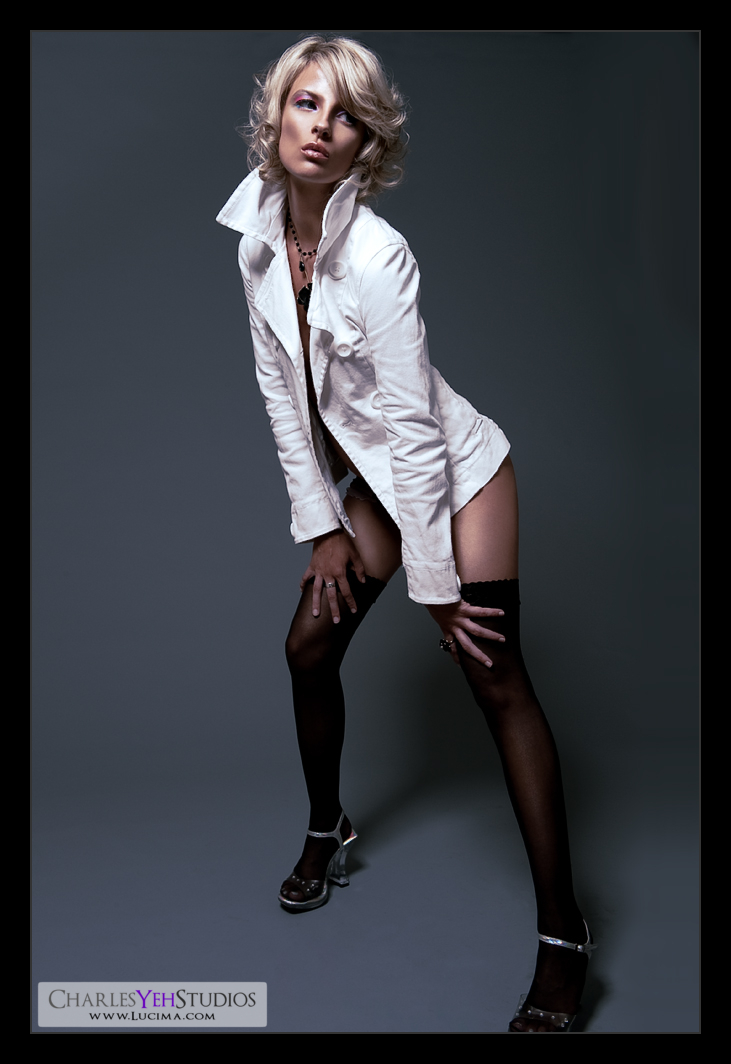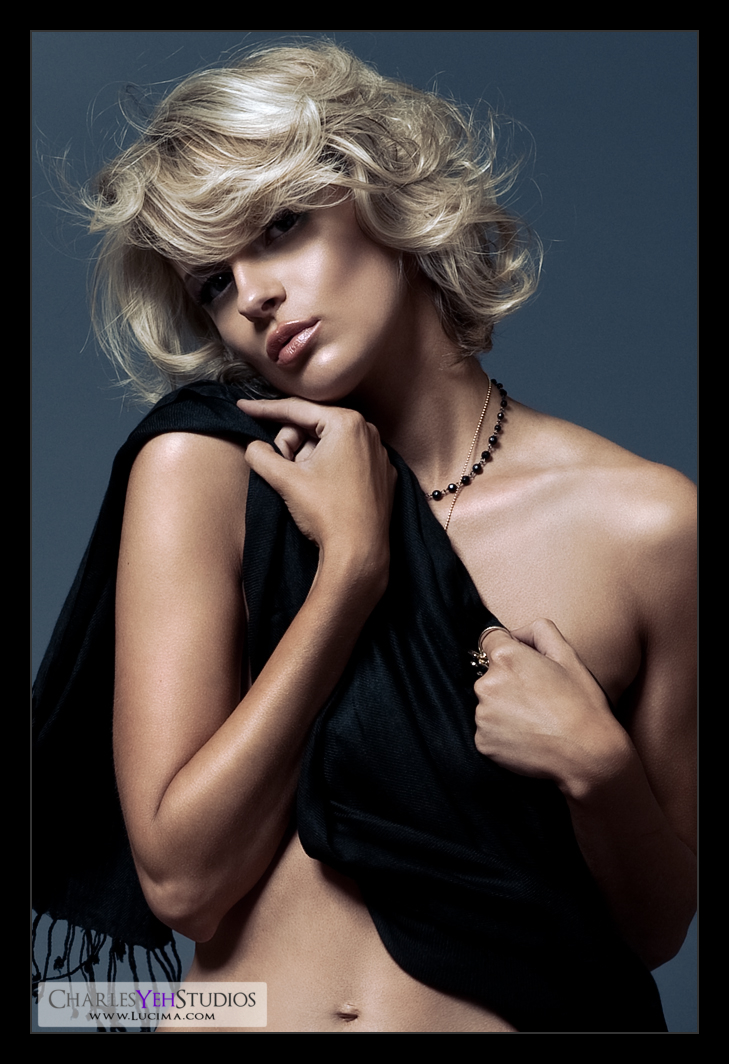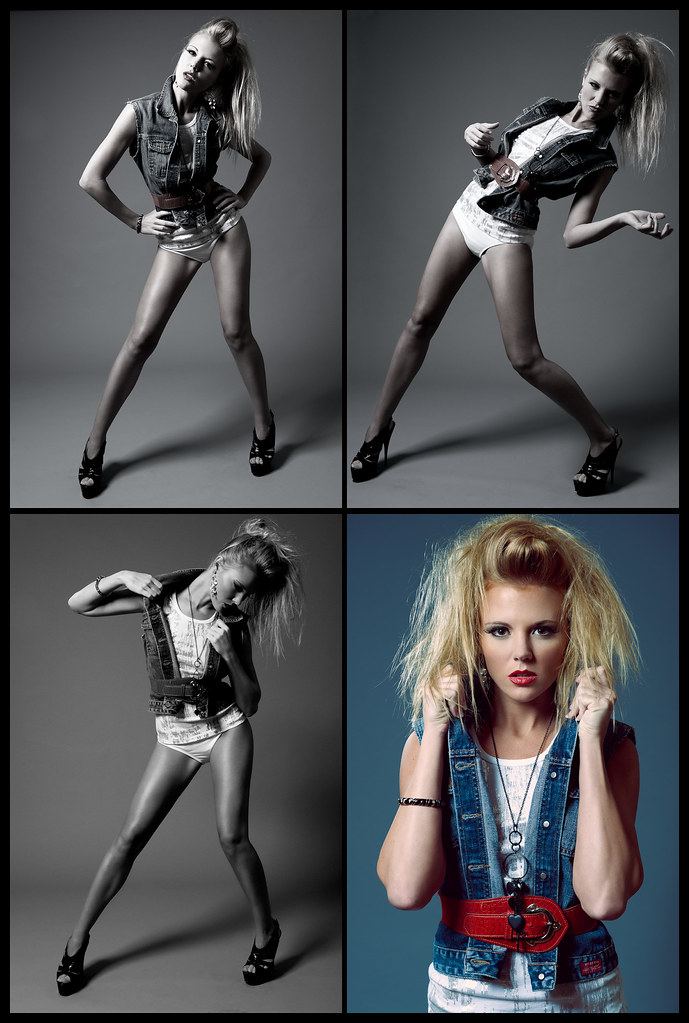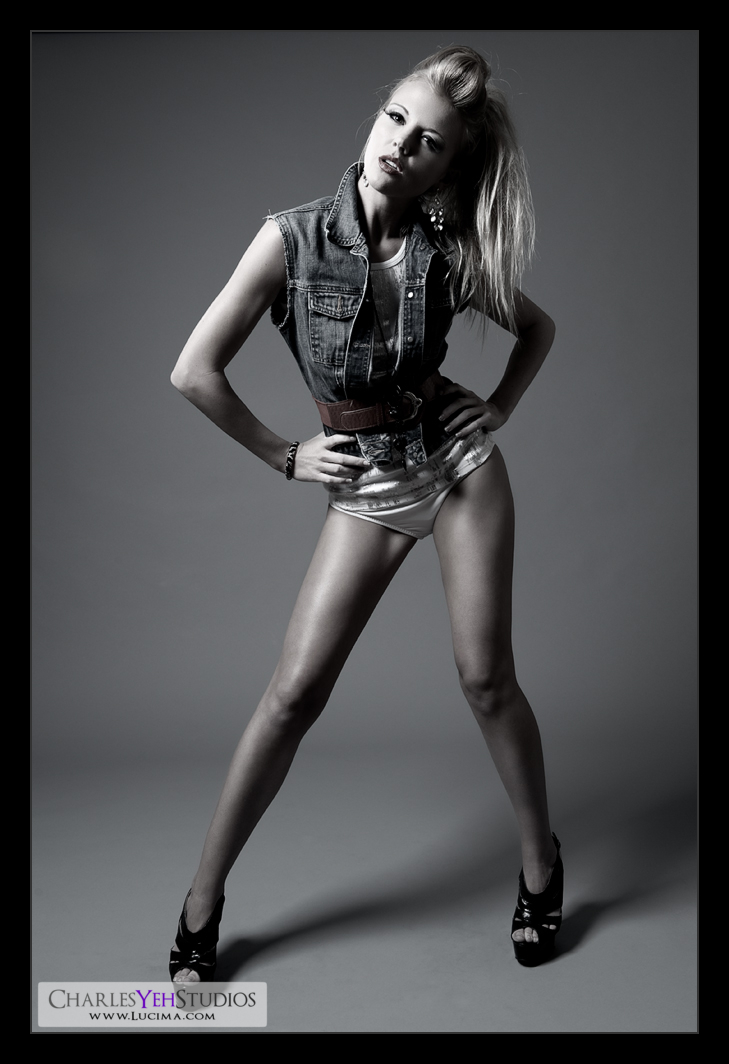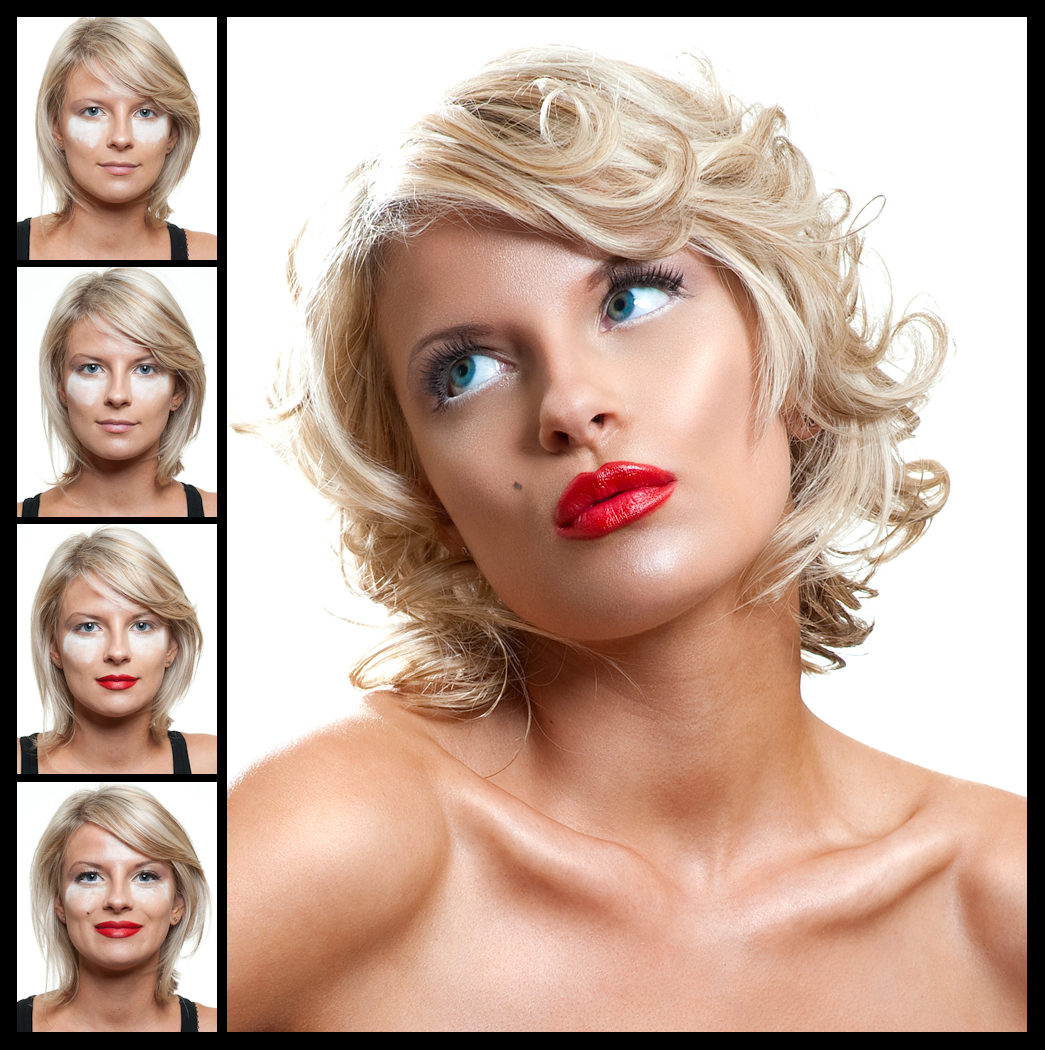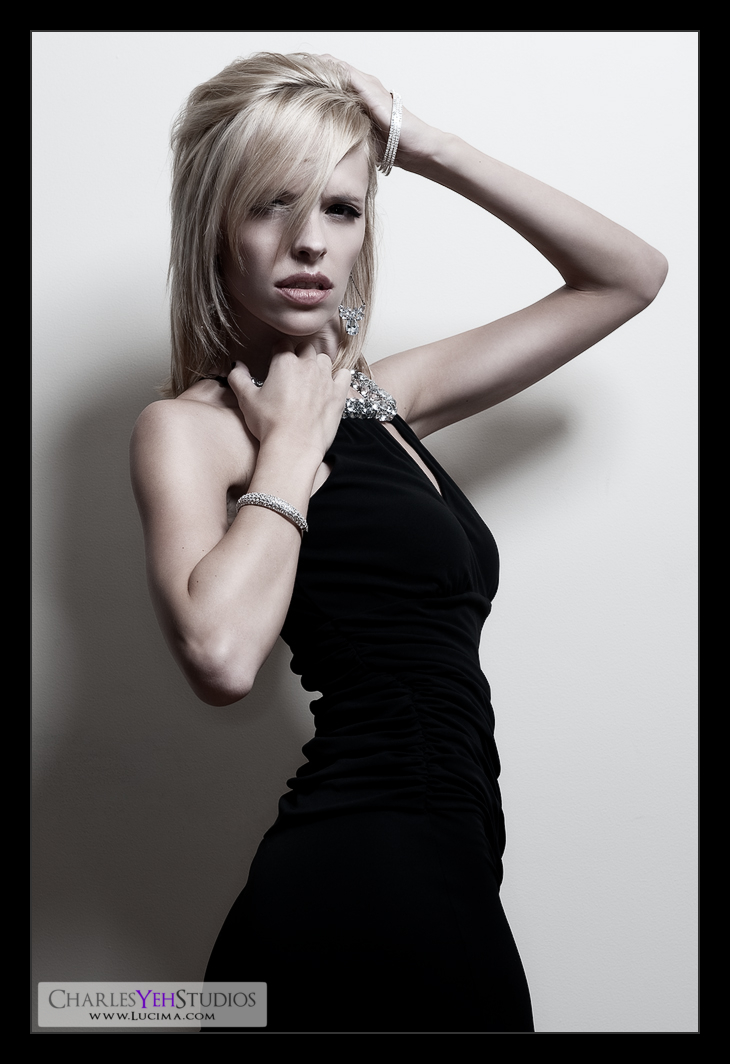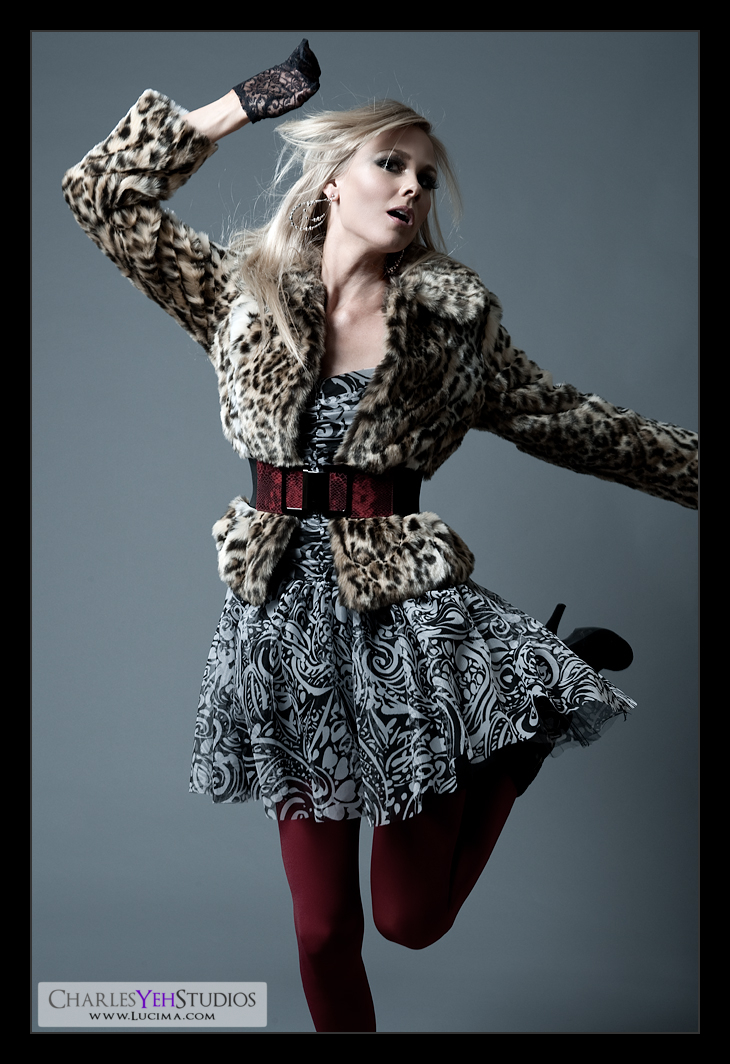
Taking a break from lingerie. You can only retouch so much lingerie before it gets tiring. Really who wants to look at pictures of beautiful women in lingerie all the time? Surely you guys must get tired of this type of stuff too? :)
Stylistically this should look familiar. It's shot the same way that I did Tricia Jo's Hard Rock set. Lighting-wise it's an AB800 in a 28" Apollo Westcott softbox from camera upper left and an AB800 in 20º gridspot from camera front left for hair increased contrast from left to right (in the frame). I don't remember why I originally shot Tricia Jo with this setup but it worked in that set and it works in this set.
Wardrobe-wise this is just as fashion forward as the Hard Rock set. Michelle really went to the pushed the envelope on this one and I love the look. It's just really well put together. The leopard spots work really well too as does the material because the fur shows up really well in the frame.
Retouching-wise there's really nothing special. A B&W gradient map (normal blending) with 50% opacity provided both the increased contrast as well as the desaturated effect. After outputting to 1000 pixels on the long-end I sharpened the whole frame while slightly sharpening the skin/face.
I guess I should talk about the dynamics of this frame. We had Kendall spin on the count of 3. Setting the D3 to continuous focus and ensuring I had good depth-of-field (f/9.0) I focused on the back of her head. As she spun, I waited until her face was visible, and hoped that the D3 follow and capture the frame in-focus. Of course the D3 never fails, only the operator ever disappoints. At 1/200th there was slight motion/focus blur, but nothing more than I'm used to as far as variance in focus is concerned for my shoots within the studio particularly at f/9.0. We did this over and over again until she was dizzy. Then we did jumping frames. :)
Wardrobe-wise this is just as fashion forward as the Hard Rock set. Michelle really went to the pushed the envelope on this one and I love the look. It's just really well put together. The leopard spots work really well too as does the material because the fur shows up really well in the frame.
Retouching-wise there's really nothing special. A B&W gradient map (normal blending) with 50% opacity provided both the increased contrast as well as the desaturated effect. After outputting to 1000 pixels on the long-end I sharpened the whole frame while slightly sharpening the skin/face.
I guess I should talk about the dynamics of this frame. We had Kendall spin on the count of 3. Setting the D3 to continuous focus and ensuring I had good depth-of-field (f/9.0) I focused on the back of her head. As she spun, I waited until her face was visible, and hoped that the D3 follow and capture the frame in-focus. Of course the D3 never fails, only the operator ever disappoints. At 1/200th there was slight motion/focus blur, but nothing more than I'm used to as far as variance in focus is concerned for my shoots within the studio particularly at f/9.0. We did this over and over again until she was dizzy. Then we did jumping frames. :)
I suppose I could have made this frame better by using f/11 to get a more forgiving depth-of-field when it came down to focusing but f/9.0 is pretty good.
Camera: D3/24-70mm f/2.8G @56mm, 1/200th, f/9.0, ISO200
Strobist: See above
Model: Kendall B.
Makeup: Kelli Zehnder
Wardrobe: Michelle Green
Camera: D3/24-70mm f/2.8G @56mm, 1/200th, f/9.0, ISO200
Strobist: See above
Model: Kendall B.
Makeup: Kelli Zehnder
Wardrobe: Michelle Green

